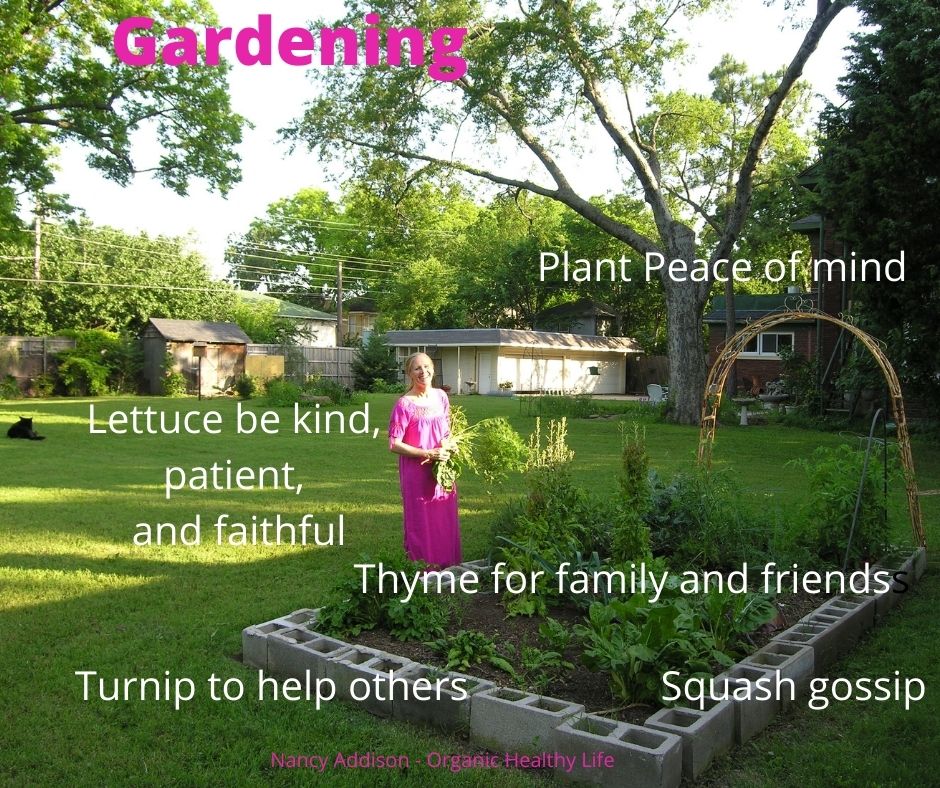He also sells hydroponic systems, seeds, and more.
You can purchase seeds in bulk or in small packets. Simply make sure they are “Organic” and “Non-GMO.” I like to buy a couple of different varieties of my favorite vegetables or fruits.
I like to do this because frequently one will thrive more than the other, and it’s good to know which type can flourish in my soil and location. I also like to experiment with different flavors of the plants. This always makes it fun and you can make this a game with your children.
The quickest plants to reach harvestability belong to the cruciferous vegetable family or radish family. Radish varieties are vast. Be sure to find a good source for bulk, non-treated,
non-GMO seeds. These are some of my favorite sprouts to grow for sprinkling on sandwiches, salads, and more.
Microgreens are a good choice of plants to grow, because they have 40% more nutrients in them than the full-grown plant. They are an easy way to get an amazing amount of intense nutrition in the diet.
Mints, oregano, and malibar spinach are good crops to grow in a container, because if you plant any of them in a garden, they can be very hard to manage and they can take over.
My children and I loved to grow our favorite herbs in little pots in the kitchen window, as they were so easy to cut and use in our recipes. One of the first things my son did when he got his apartment at law school, was to purchase some small pots of his favorite herbs for his kitchen window.
Fresh herbs and plants in a recipe can really make the flavor of a recipe pop. Using fresh herbs, leafy greens, sprouts, vegetables, mushrooms and fruits is one of the best ways to enhance the flavor of a dish.
I believe in getting children involved. They love gardening. The statistics show that children who garden have higher science and math scores. I have also found that they are much more likely to try eating the foods they have grown personally, than ones bought at a store.
I also recommend growing a few plants that attract pollinators and butterflies, like marigolds, zinnias and crocuses. You can grow herbs like lavender, sage, parsley and dill. Butterflies love dill for butterfly caterpillars to eat as food. I have some of the most beautiful Monarch butterfly caterpillars in my garden when I plant dill amongst my flowers. I love to watch them, so I always plant extra.
I have to warn and show the caterpillars and butterfly cocoons to my gardening helpers, so they do not kill them by thinking they are pests. You may even want to put out a little sign, saying
“Butterfly Garden, please protect the caterpillars and cocoons.”
The pollinators are struggling. They add such beauty to our environment, as well as help to pollinate our food. I enjoy my garden so much more when I plant these flowers and
butterfly-friendly foods in my garden. They make it more fun
and interesting. I also feel like I am helping the environment
and helping with their survival by doing this.
Here are a list of my favorite gardening supply websites:
4. Gardener’s Supply is another great resource for a variety of things for gardening.
They can even overnight them to you, so they are incredibly fresh.
The broccoli powder doesn’t have much taste, so you can add this powder to all your foods before serving. Don’t destroy the live broccoli sprout enzymes by getting them too hot, so add the broccoli powder after you have prepared the food, but before serving. You will get that raw, organic broccoli sprout powder nutrition.
Being able to grow your own food can be empowering and in these times, it can provide a multitude of benefits you may not even imagine. Growing your own organic food can be an extremely enriching experience, as well as good for your health.
I hope this helps.
Love to you all, Nancy
copyright@nancyaddison2020
Nancy’s 7 books on Amazon are also in Audio and some of them are in large print:
https://www.amazon.com/Nancy-Addison/e/B00E6K5KGY/ref=dp_byline_cont_pop_book_1
Nancy’s website is: https://www.organichealthylife.com
Support Nancy’s work – Donate on venmo – @Nancy-Addison
Medical Disclaimer: Information provided in this podcast, blog, article, video is for informational purposes only. The information is a result of years of practice and experience by Nancy Addison CHC. However, this information is NOT intended as a substitute for the advice provided by your physician or other healthcare professional, or any information contained on or in any product label or packaging.
Do not use the information provided in this blog, audio podcast, article, video for diagnosing or treating a health problem or disease, or prescribing medication or other treatment. Always speak with your physician or other healthcare professional before taking any medication or nutritional, herbal or homeopathic supplement, or using any treatment for a health problem. If you have or suspect that you have a medical problem, contact your health care provider promptly. Do not disregard professional medical advice or delay in seeking professional advice because of something you have read in this email.
Information provided in this video or audio and the use of any products or services related to this video by you DOES NOT create a health counselor-client relationship between you and Nancy Addison, certified health counselor. Information and statements regarding dietary supplements have not been evaluated by the Food and Drug Administration and are not intended to diagnose, treat, cure, or prevent any disease.
|
|
